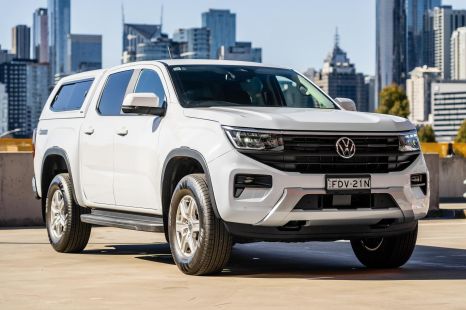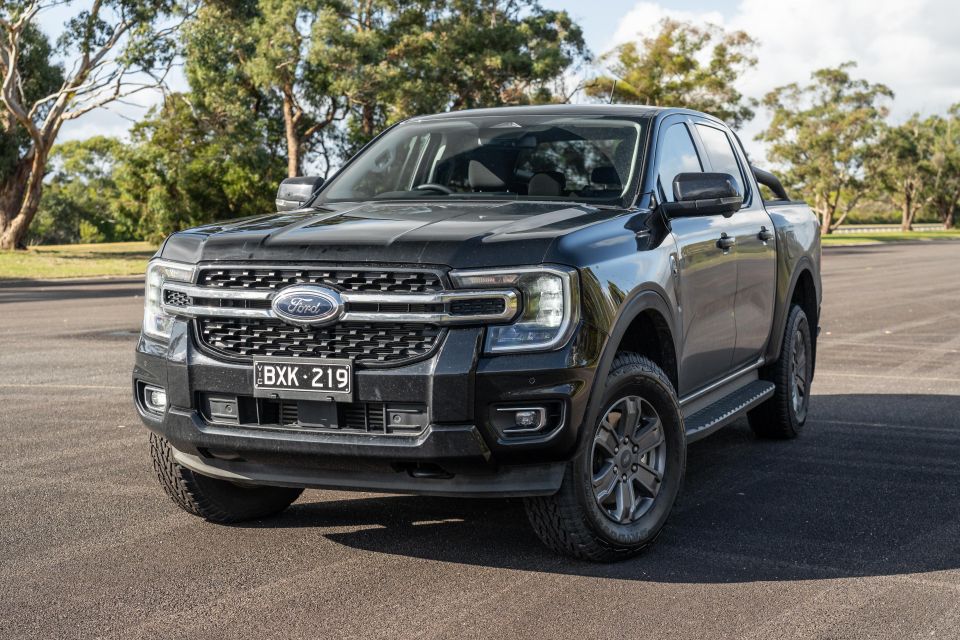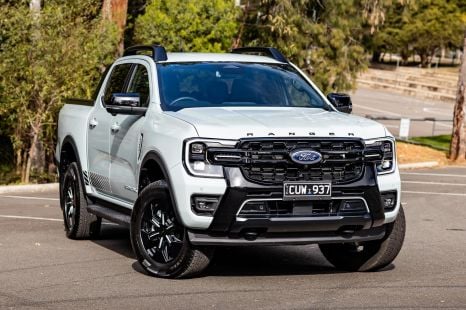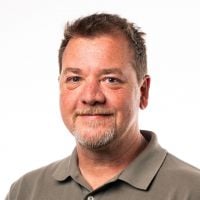

Max Davies
29 Days Ago
The XLT badge might be associated with workhorses, but its price and technology are in keeping with what you'd expect from rival flagships.



Quickly see how this car stacks up against its competition. Select any benchmark to see more details.
CarExpert does the hard work to get you the best price. No negotiating, no hidden costs, just expert help and real savings on your next new car.
This car needs no introduction. The new Ford Ranger is the biggest new vehicle launch in Australia this year, and the V6 is the engine buyers are keenest on.
Unlike the fully-loaded Wildtrak, or even the mid-range Sport, the XLT V6 needs to tread a difficult tightrope.
On the one hand, its price tag and V6 engine mean it needs to be a nice ute capable of hauling a family in comfort. On the other the XLT badge appeals to tradies, or off-roaders keen for a reasonably affordable base on which to build their dream truck.
Has the Blue Oval managed to strike the right balance?
The sprawling Ranger line-up contains 23 variants. For a full breakdown of every model’s price and standard equipment, click here.
The XLT is ostensibly a mid-range model, given it sits above the XL and XLS, but below the Sport and Wildtrak.
Realistically though, it’s likely to be the entry point for most private buyers, who prefer flashy screens and creature comforts over stripped-back, fleet-friendly simplicity.
The XLT line-up starts at $53,990 before on-roads for a 4×2 bi-turbo diesel pickup, and jumps to $59,190 before on-roads for the 4×4 extended cab, and $61,190 for the 4×4 dual-cab pickup.

Moving to the V6 bumps the price to $62,290 before on-roads for the 4×4 dual-cab-chassis, and $64,190 for the 4×4 dual-cab pickup on test here.
That sticker puts the V6 dual-cab pickup in direct competition with the Toyota HiLux SR5+ automatic ($63,180). It also takes on the Isuzu D-Max X-Terrain Crew Cab ($64,990 drive-away), Mazda BT-50 SP ($63,390), and Nissan Navara PRO-4X ($60,490).
The XLT might not be the top-spec Ranger, but it’s in line with top-spec rivals.
2022 Ford Ranger XLT
Prices exclude on-road costs

Before we get to the flagship technology features, it’s worth calling out how comfortable the Ranger is behind the wheel.
With a tilting and telescoping wheel, well-padded seats that accomodate tall drivers, and plenty of storage up front, it’s easily the best ute out there if you’re planning to spend long stints on the highway – at least, before you get into the RAM realm.
The Ranger sets the standard for modern utes, no doubt about it.
The XLT might be a lower-end member of the range, but it’s not short on sizzle. The vertical touchscreen is actually smaller than the unit in the Wildtrak, but it’s still streets ahead of anything else in the ute class at first glance.


Likewise the digital instrument cluster. It doesn’t feature maps or many customisation options, so it’ll be interesting to see how it compares with the Amarok when it touches down, but for now it lends the new Ranger a more modern feeling than its predecessor.
As for the actual operation of the screen? It’s a mixed bag. The software looks and feels very modern, and Ford has retained some physical buttons for frequently-used climate functions, so it’s easy to fiddle with the temperature on the move.
The menu structure is logical, and the sheer amount of screen real estate means key information isn’t buried. It’s possible to have your mapping, radio preferences, and climate information on display all at once, for example. The wireless Apple CarPlay connected flawlessly for us, although it drains the battery rapidly with no wireless charger.
A bit more processing power still wouldn’t go astray though; the screen sometimes lags when you’re hopping between functions.




FordPass Connect is standard on the XLT, and allows owners to lock or unlock and remotely start their car, check fuel levels, find the car, activate the exterior lighting, or even check the indicators on your trailer are working.
It feels like Ford has really thought about how to value-add with its app in the Ranger, rather than just translating passenger car technology into a vehicle with a different set of goals.
Storage space around the cabin is plentiful. The central bin is deep, the door pockets have plenty of room, there are two cupholders on the transmission tunnel, and the slot beneath the dashboard is huge. The slot ahead of the gear selector is perfect for a large McDonalds fries – no chip crisis here.
It’s a shame the extra glove compartment and cupholders in the Wildtrak aren’t standard here though, given having less money doesn’t mean you have less to store.


Rear seat space is fine, but doesn’t feel like much of a step on from what was previously on offer. Leg- and headroom are both acceptable, and the bench is broad enough that three tradies will be able to travel on short journeys without wanting to kill each other afterwards.
The inclusion of air vents is good, the fact Ford has fitted a 12V slot but no USB ports on the rear of the transmission tunnel feels like a missed opportunity.
The 12V is versatile when it comes to accessories, but you’ll need to plug in a dongle to charge iPads back there.
Along with the requisite ISOFIX and top-tether child seat points, the Ranger features a fold-down central armrest, damped rear grab handles, and storage bins beneath the seat bases.




Dual-cab Ranger models have a wider tub than before, billed as sufficient to flat-stow a 1200mm x 800mm pallet.
It’s simpler to access, with sturdy box steps fitted just behind the tyres. At 100kg, my weight didn’t make them flex.
The counterbalanced tailgate (with mounting points for vices and even a pre-drawn ruler) can be lifted with a finger, there are six tie-down hoops in the bed, and the box sides have structural attachment points for canopies pre-fitted.
The spray-in bed liner on our tester is a $400 option, and feels sturdier than a standard plastic finish.

Two engines are offered on the Ranger XLT. The cheaper option is a familiar 2.0-litre Bi-Turbo four-cylinder diesel producing 154kWand an unchanged 500Nm.
The 3.0-litre V6 turbo-diesel engine fitted to our tester produces 184kW and 600Nm.
It’s mated to a 10-speed automatic, and sends power to the road through a four-wheel drive system capable of 2H, 4H, and 4L operation – but also a 4A mode that allows for all-wheel drive on the tarmac, regardless of conditions. That will endear the V6 Ranger to plenty of customers.
Claimed fuel economy for the V6 is 8.4 litres per 100km on the combined cycle, and the ute has an 80L fuel tank. We saw 9.0L/100km on a mixed highway and city drive loop.
Payload in the XLT is 949kg, and braked towing capacity is 3500kg. Its GCM is 6400kg, and its GVM is 3280kg. Tare weight is 2267kg.

The V6 engine in the XLT is a smoother, more effortless mover than any of its four-cylinder rivals.
With 30kW and 100Nm more than the Bi-Turbo, it’s the torquiest dual-cab ute on offer in Australia ahead of the outgoing Amarok.
That plays out with a satisfying surge of performance from below 2000rpm when you lean on the accelerator, and better in-gear response at highway speeds. It doesn’t need to work as hard, and when you need it to dig deep you’re immediately aware there’s a higher ceiling on what it can do.
Driven back-to-back with the 2.0L it immediately sets itself apart with more muscular performance; the sort of performance that will immediately endear the V6 to people who live life with a heavy trailer hitched to their ute.

Wondering exactly how much faster it is? Stay tuned to the CarExpert YouTube channel, a video is coming soon.
Beyond the extra punch on offer, the V6 sets itself apart with proper full-time four-wheel drive. Rather than the four-wheel drive system in the Bi-Turbo, which shouldn’t be driven in 4×4 on sealed roads, the system in the V6 can be used all the time.
You can set it in 4A and forget for normal driving, and enjoy all-wheel drive traction in wet conditions without the risk of your differentials binding. Utes on all-terrain tyres are notoriously skittish on wet tarmac, so the added security of a full-time four-wheel drive system reaps benefits in a wide range of conditions.
Only the Amarok offers the same functionality at the top end of the market, although the less expensive Mitsubishi Triton also offers its own take on full-time four-wheel drive.
While the core ladder frame as well as the coil front and leaf rear suspension setups are familiar, Ford Australia engineers made the track 50mm wider and moved the dampers outboard, theoretically cutting down further on hopping and bouncing when lightly laden.

The Ranger has always been one of the more comfortable dual-cab utes to drive unladen, and the new model is no exception. The XLT can’t escape its ladder-frame roots and 950kg payload entirely, but it does smooth out the worst edges better than its rivals with an empty tray.
It’s rock solid over the sort of washboard gravel roads prevalent in remote parts of Australia, and does an excellent job soaking up the sort of pitted streets prevalent in the less remote bits. On coarse-chip roads it’s impressively hushed in the cabin, too.
Like its predecessor, the new Ranger features light steering and decent all-round visibility. It’s one of the easiest utes to pilot in town, and the new electric power steering system feels slightly more direct than before. In the old model you needed to twirl, twirl, and twirl the wheel some more at low speeds; the new model requires smaller inputs.
The smooth start/stop system makes a difference in the city, although plenty of owners will no doubt turn it off immediately.

It’s worth noting the reversing camera is a magnet for mud and spray, so it’s worth carrying a cloth in the cabin if you rely on it and frequent mucky roads.
The Isuzu D-Max was the first ute to really put a full suite of driver assists front and centre, but the Ranger’s systems are arguably better calibrated. The lane-keeping assist keeps you between the white lines on the highway and holds the car nicely in its lane in tricky conditions (check 31:30 in our Ranger Wildtrak video).
It doesn’t have the full gamut of off-road modes you get in the Sport and Wildtrak, but the XLT has the same driveline hardware. That means in the right hands, it’ll go just as far.
Our experience with the Ranger off-road so far has proven it’s an idiot-proof way to go into the wilderness.




Ranger XLT highlights:




CarExpert does the hard work to get you the best price. No negotiating, no hidden costs, just expert help and real savings on your next new car.
Ranger Sport adds:




Ranger Wildtrak adds:
For a full specification breakdown for the Ranger line-up, check out our full pricing and specification story.

The new Ford Ranger is yet to be crash tested by ANCAP, so it remains unrated. The outgoing model received a five-star ANCAP safety rating, but it was based on testing conducted in 2015.
Standard safety features include:
Other safety equipment such as front parking sensors, adaptive cruise control with stop/go, surround-view camera, and fully-autonomous parking assist are available on higher trim levels.
The XLT features adaptive cruise, front parking sensors, and fully autonomous parking assist, but misses out on a surround-view camera.

Ford provides a five-year, unlimited-kilometre warranty.
Service intervals are every 12 months or 15,000km, whichever comes first, and the first four visits are capped at $329 apiece.

Believe the hype. The new Ford Ranger is bloody excellent, and the V6 has been worth the wait.
Although it’s priced in line with range-topping rivals, the interior technology and torquey engine mean the XLT doesn’t feel overpriced. It’s a smartly-designed, well-executed ute that builds on the success of its predecessor.
The XLT sits at an interesting point in the line-up, though. It’s the cheapest way to get your hands on a V6, and realistically buyers aren’t missing out on anything that’s critical from the Sport or Wildtrak.

The fact the Sport is just $2500 more expensive than the XLT does raise a few questions, though. If you’re planning to head off-road, the fact you get the full gamut of drive modes and 4×4 pages in the Sport makes the extra spend worth it.
The nicer wheels, powered and leather-trimmed driver’s seat, and wireless phone charger would also have us thinking about the Sport.
With that said, not everyone wants their ute to be an all-singing, all-dancing showpiece. If you want V6 power on a budget – or as close to it as is currently possible – the XLT is an appealing option.

Click the images for the full gallery
MORE: 2023 Ford Ranger review MORE: 2023 Ford Ranger Sport V6 review MORE: 2023 Ford Ranger price and specs MORE: Everything Ford Ranger
CarExpert does the hard work to get you the best price. No negotiating, no hidden costs, just expert help and real savings on your next new car.
Discover and compare similar models
Scott Collie is an automotive journalist based in Melbourne, Australia. Scott studied journalism at RMIT University and, after a lifelong obsession with everything automotive, started covering the car industry shortly afterwards. He has a passion for travel, and is an avid Melbourne Demons supporter.


Max Davies
29 Days Ago


Matt Campbell
12 Days Ago


Marton Pettendy
11 Days Ago


Damion Smy
4 Days Ago


Josh Nevett
3 Days Ago


Josh Nevett
3 Days Ago
Suggested Comparisons